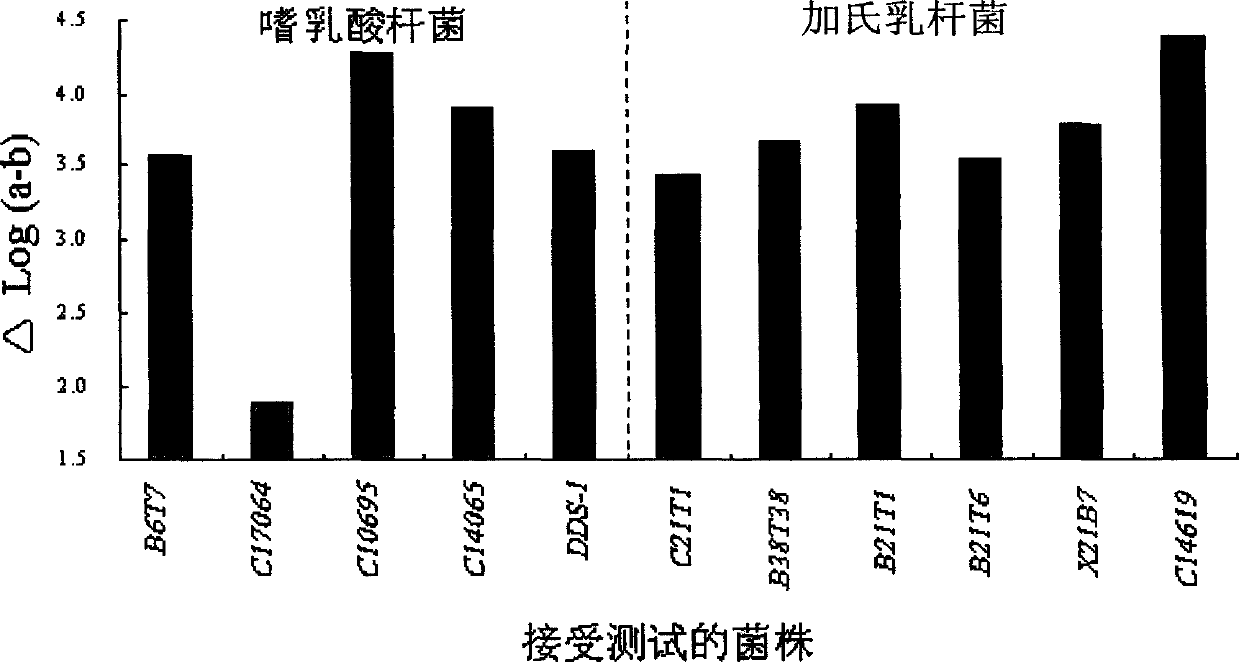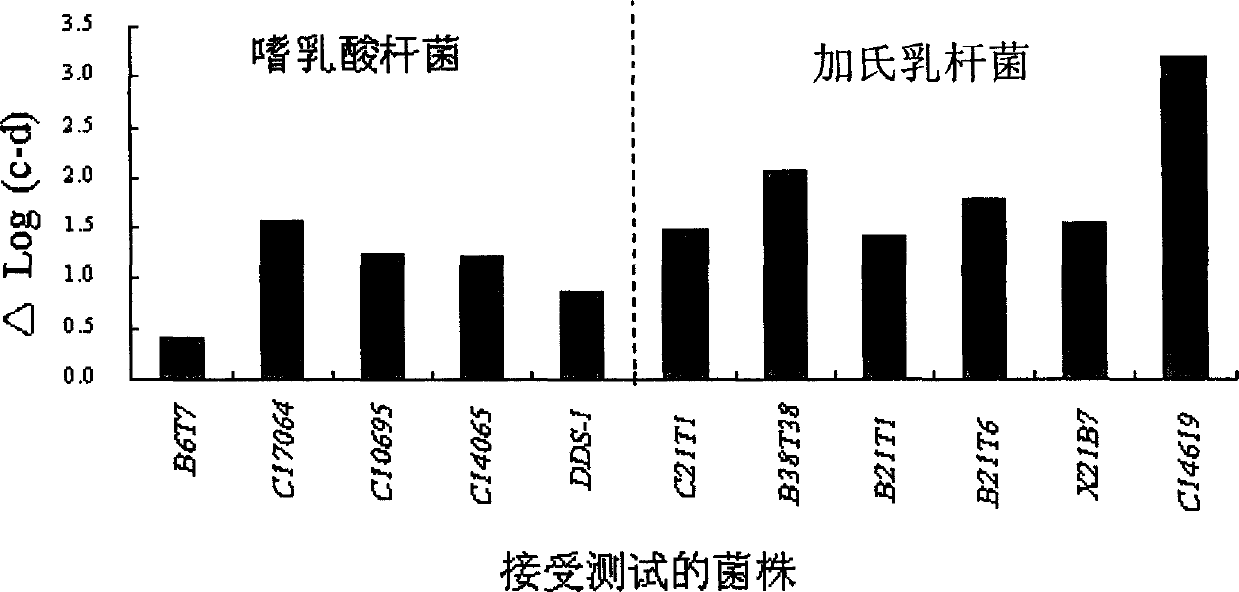Acid and choline-resistant separated strain of lactobacillus with ability of reducing and assimilating cholesterol
A technology of Lactobacillus acidophilus and Lactobacillus, which is applied to medical preparations containing active ingredients, bacteria, and methods based on microorganisms, etc. It can solve the problems of difficult maintenance of bacterial count, difficult survival, and complex nutritional requirements.
- Summary
- Abstract
- Description
- Claims
- Application Information
AI Technical Summary
Problems solved by technology
Method used
Image
Examples
Embodiment 1
[0064] Example 1 Isolation and Screening of Lactobacillus Isolates
[0065] Materials and Methods:
[0066] 1. Medium and diluent:
[0067] 1. Screening medium:
[0068] (A) Tomato juice agar medium
[0069] Casein enzymatic hydrolyzate (Sigma, Louis, Mo, USA) 10g
[0070] Skimmed milk 10g
[0071] Tomato Juice 400ml
[0072] Agar 12g
[0073] Distilled water up to 1L
[0074] (B) Rogosa agar medium
[0075] Rogosa agar (Merck, Darmstadt, Germany) 74.5 g
[0076] Distilled water 1L
[0077] After dissolving by microwave heating, wait to cool to 55°C, adjust the pH value to pH 5.5 with acetic acid
[0078] (C) Lactobacillus selection medium (LBS)
[0079] Rogosa agar 8.4g
[0080] Tomato Juice 40ml
[0081] Distilled water 60ml
[0082] After dissolving by microwave heating, wait to cool to 55°C, adjust the pH value to pH 5.5 with acetic acid
[0083] (D) Rogosa+X-glu agar medium
[0084] 80 mg of 5-bromo-4-chloro-3-indolyl 1-β-D-glucopyranoside (X-glu) (Sig...
Embodiment 2
[0129] Example 2Acid resistance test
[0130] 1. Experimental operation procedure:
[0131] With reference to the method disclosed in J.E.Holcombe et al., (1991), Cult.Dairy Prod.J., 26(3):4-5 and US 5,711,977 granted to Y.S.Yang et al., neutral (pH7) and simulated gastric acid environment (pH2) to test the number of surviving bacteria.
[0132] After each test strain is activated twice with MRS broth, get its bacterial solution and centrifuge (3000rpm, 10 minutes), after removing the supernatant, add 1ml of physiological common saline solution (0.85%NaCl, pH7), first remove the bacteria with a bamboo stick. Stir the body, then shake it evenly, then take 0.5ml of the dispersed and floated bacteria solution and put them in the physiological saline solution of pH 7 and pH 2 respectively, and after standing in the constant temperature incubator at 37°C for 2 hours, measure the number of surviving bacteria respectively . The smaller the value of Δlog bacterial count [= log (b...
Embodiment 3
[0137] Example 3. bile salt tolerance test
[0138] 1. Experimental operation procedure:
[0139] After each test strain was activated twice with MRS broth, 1% of the inoculum was inoculated into 10ml MRS broth and 10mL MRS broth (MRSO) containing 0.3% ox bile, and cultured at 37°C for 24 hours. Spectrophotometer was used to measure the bacterial concentration (OD 660 ). In addition, the number of remaining bacteria was also counted, where Δlog bacteria value=log(number of bacteria in MRS broth-number of bacteria in MRSO broth), and the smaller the number of Δlog bacteria, the better the bile salt tolerance of the test strain.
[0140] 2. Results:
[0141] After the lactic acid bacteria are treated with bile salts, the survival rate of different strains is very different. Therefore, it is important to screen the lactic acid bacteria strains with tolerance to bile salts in the selection of probiotics (S.E.Gilliland et al., (1984), J . Dairy Sci., 67: 3045-3051; P. Marteau...
PUM
 Login to View More
Login to View More Abstract
Description
Claims
Application Information
 Login to View More
Login to View More - R&D
- Intellectual Property
- Life Sciences
- Materials
- Tech Scout
- Unparalleled Data Quality
- Higher Quality Content
- 60% Fewer Hallucinations
Browse by: Latest US Patents, China's latest patents, Technical Efficacy Thesaurus, Application Domain, Technology Topic, Popular Technical Reports.
© 2025 PatSnap. All rights reserved.Legal|Privacy policy|Modern Slavery Act Transparency Statement|Sitemap|About US| Contact US: help@patsnap.com



